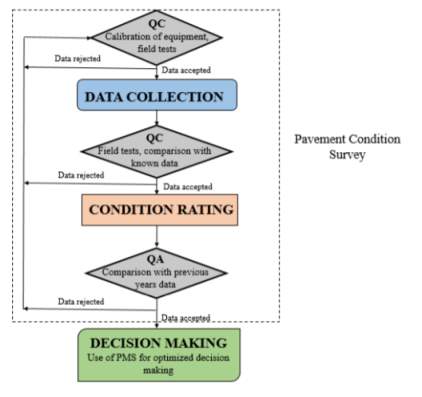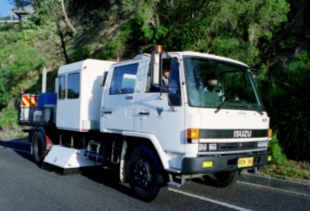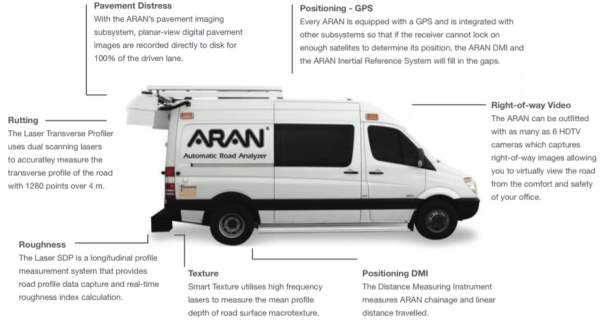Asset Management Data and Decision-making
Info: 4759 words (19 pages) Dissertation
Published: 10th Dec 2019
Tagged: ManagementData Protection
Table of content:
2.1 Selection of an organization
2.3 Goals and objective and data needs
2.5 Level of service and performance models
2.6 Maintenance needs and alternative treatments
2.7 Life-cycle analysis and selection of best alternative
2.9 Conclusion and recommendations
1. Introduction
The aim of the asset management is to provide efficient, reliable, safe services to the community. The Road Management Act 2004 has established a framework for the management of public roads in Victoria. (City of Yarra).
Purpose of the plan. How to achieve.
This asset management plan is to demonstrate responsive management of assets (and services provided from assets), compliance with regulatory requirements, and to communicate funding required to provide the required levels of service (holdfast).
2. Assignment Tasks
2.1 Selection of an organization
The Melbourne City Council local government area is located in the Melbourne’s city center and inner-city suburbs. With 14 suburbs, covering 37.7 km2, the city area is the commercial, retail and transport centre (Melbourne, 2017b). Thus, the major features are Port of Melbourne, parks and gardens, different universities and hospitals, as well as leisure complexes (Knowyourcouncil.vic.gov.au, 2017). It was reported that estimated residential population is 140’000 people, whereas, further 743’000 people visit the Melbourne city area for work and entertainment every day (Melbourne, 2017b). In order to provide safe and efficient services to this area road assets have been developed. The Council is responsible for nearly 259 kilometers of local roads with associated footpaths as well as footpaths located adjacent to arterial roads, drainage, kerb and channel, as well as 20 vehicular and pedestrian bridges. However, in some cases, road assets might be owned by the Council but located on a road which belongs to the Road Construction Authority (VicRoads), and vice versa. An approximate replacement value of these assets is $1’083 million. This report provides management of one of these road infrastructure assets as pavements which can be defined as the structural part of the roadway excluding footpath. Usually, pavements are made up of crushed rock, asphalt or stabilized soil (Melbourne, 2015). Pavement Management Systems (PMS) have been developed since early 1970s in order to manage efficiently the road assets (Mandiartha et al., 2012, Hoque, 2016). Efficient pavement management is able to provide and sustain pavements in an acceptable condition at a minimal life cycle cost. Therefore, this approach produces benefits in terms of savings and pavement performance (Highway and Officials, 1993, Haas and Hudson, 2015). Additionally, the Council uses a pavement modeling software Snowy Mountains Engineering Corporation (SMEC) Pavement Management and Road Inventory System which is designed as inventory, condition summary and budget planning tool (Melbourne, 2015). Thus, the report has a sufficient amount of data needed for a statement of asset condition and level of service. Moreover, it is possible due to accessible data regarding to pavement assets and the CIV5313 lecture notes.
2.2 Literature review (10%)
An effective PMS depend on reliable, accurate, and complete information. This information acts as the basis for future prediction for pavement conditions and for efficient decision-making (Zimmerman et al., 2010). Therefore, it is essential to collect the data which can be categorized in the following groups (Hoque, 2016):
- Physical data
- Condition data
- Historical data
- Environmental
- Other additional data
Overall, the pavement management process is shown in Fig. 1.

Fig. 1. Pavement management process (Attoh-Okine and Adarkwa, 2013)
The main feature of the asset is presented by physical data which includes such important characteristics as class/type of asset, location and physical attributes, as well as cost appliances, etc. Nonetheless, various assets have different data required for the assessment. Thus, the physical data needed for buildings is not similar to the data for a road network. For roads pavements physical data to consider might include physical attributes, a pavement type and configurations, a surface type and age, etc.
The other type of the data is the condition data which essentially represents performance data. Similarly, condition assessment data might vary from one asset type to another in accordance to the set performance criteria. The data can be qualitative or quantitative according to established standards, for instance, the pavement condition index (PCI). Via the condition data it is possible to compare historical performance with current status of assets. As a result, the Council’s performance increases by better decision-making.
Additionally, another important feature is construction and maintenance records which represent the historical data. It could include such aspects as dates of construction or reconstruction/ rehabilitation, design standards, etc. (Hoque, 2016, Flintsch and Bryant, 2006).
Literature review indicated that the majority of the data for the City of Melbourne for the pavement assessment can be found directly at a Council’s web page (Melbourne, 2017a). It includes such records and documents as road management plans for different years, annual reports, annual budget plans, asset management strategies, council’s plans, road inspections, road safety plans, satisfaction level surveys, and walking plans. By careful evaluation of this information it is possible to predict the future pavement conditions which lead to an effective asset management decision process regarding prioritizing works or justifying budget allocations (Melbourne, 2004).
2.3 Goals and objective and data needs
2.3.1 Assumptions
Data has an essential role in asset management. For following parts of this report such as a prediction of future conditions for maintenance need estimations, the Council does not have sufficient data such as detailed inventory and condition data. However, this data was provided by Dr. Zahidul Hoque as supplement information for this assignment. The records were taken for XYZ city by a city council (Hoque, 2017). In order to apply these records for the City of Melbourne it is necessary to make some assumptions and for further assessment. The assumptions include:
- The road network in the City of Melbourne has similar characteristics (construction, traffic, environmental features and etc.) to the one in XYZ.
- The Councils have the same pavement maintenance strategy and expectations.
- The maintenance pavement treatments are the same.
- All data provided is reliable and historical.
- All data collection methods are robust and repeatable.
- All data is linked to organizational processes.
- The Council has sufficient funding.
2.3.1 Goals and objective of the Council
The Council’s goal is a provision of core services to the community to meet the community’s needs (Tori, 2014). In terms of road assets, the Council plans to control and maintain the exiting transpiration network as a safe, serviceable, efficient and comfortable network by managing two components which include a routine maintenance on a day to day basis and renewal/rehabilitation of assets. Moreover, the Council has to demonstrate that it is responsible to manage all of the road assets under its control (Melbourne, 2015). The Council named one if the goals in the Council Plan 2017/2021 which is an achievement of “a connected city” by optimizing of road network for current and future travel modes (Melbourne, 2017c). Therefore, it is essential to develop effective road asset management and, as a part of it, pavement asset management. By analyzing of the historical pavement condition data, the Council aims to develop performance models and as a result of this analysis prepares its short-term and long-term maintenance programs.
2.3.2. Data needs analysis
The fundamental basis of an asset management system is data which includes inventory, usage, condition, maintenance, cost and environmental data. In order perform successful decision-making, the data must be considered as fit-for-purpose (Hoque, 2016). The requirements for a fit-for-purpose data are described in a 2.3.1 section (the assumptions 4-6). For pavement management the performance and inventory data are needed (Haas and Hudson, 2015). The inventory data includes geometric features of the pavement, a location, pavement age, a number of lines, a maintenance cost and effectiveness for the high quality performance model. The performance data provides observed roughness and ruts.
Additional data includes traffic history (e.g. traffic loads) and environmental data (e.g. temperature). It is important to utilize these types of data because, for instance, heavy traffic load repetitions accelerate the damage of the surface of roads. Similarly, low temperatures cause low temperature thermal cracking of asphalt pavements (Uddin, 2006).
According to the assumptions, the condition information was collected by a robust method. For this report there are some standards for pavement maintenance. Thus, surface roughness and run depth are considered to be estimation of a maintenance need. The Council adopted the strategy which points that if a road section roughness exceeds 2.7 IRI (International Roughness Index) or a run depth 7.0 mm, then the section must be viewed as a candidate for maintenance. The method of collection is robust, therefore, these estimations are final. The types of service treatments are rut filling, overlay or mill, and resurfacing.
2.4 Data collection
Over past several years, there have been a number of advancements in the technology which collects data. Nonetheless, the data collection efforts still require significant resources on a regular basis (Zimmerman et al., 2010). Before the data collection it is important to estimate such points as: types of data required, a level of accuracy, a collection frequency. According to these points asset condition data can be collected by different techniques such as automated records, a visual inspection, an automated distress survey method, non destructive test (NDT) methods, and destructive testing (Hoque, 2016). Examples of these methods are IRI, Present Serviceability Rating (PSR), PAVER, Windscreen Survey, etc. Manual condition surveys were the predominate techniques for data collection (Hoque, 2006). However with advancements in sensors and computer technology, they were replaced by automated surveys. Thus, the automated distress survey method can be suitable for the pavement management. Pavement distress is an important feature which defines the status of a pavement and it can be practical in selecting appropriate treatment (Haas and Hudson, 2015). By capturing an image of the pavement with fully automated processing, the technique is more cost-effective, safe, accurate ad consistent in comparison to manual data collection such as visual inspection (Hoque, 2016). Distress evaluation usually considers tree factors such as the type, severity, and extent of damage. The information which can be obtained is blowups, faulting, joint distress, cracking, spalling and etc (Abdelaty et al., 2015). There are numerous commercially available equipment ranging from high-speed contactless sensors, which can instantly analyze data provided, to photo-logging and video recording, which are usually post-processed (Hoque, 2006). Some examples of equipment are listed below.
Hawkeye
HAWKEYE is automated survey equipment which was developed by ARRB Group Ltd (Hoque, 2006). It can be seen in Fig. 2. That HAWKEYE can be customized by different pieces of equipment including video package, digital profiler or Global Positioning System (GPS). Thus, it is capable of conducting network and project level surveys, road inventory, asset management surveys, quality control, road characteristics (e.g. cracking, roughness) at highway speeds (up to 110 km/h).

Fig. 2. HAWKEYE series (ARRB, 2006)
RoadCrack

RoadCrack is an automated device for cracking information collection which is able to detect and report cracking type, extent, and severity of cracking of defects wider than one millimeter. It was developed by the Commonnwealth Scientific and Industrial Research Organization (CRISO) for the New South Wales (NSW) Roads and Traffic Authority (RTA). The device has an array of sensors and a high-speed linear array image acquisition system and it possesses an ability to monitor at road speed (105 km/h) (CSIRO, 2017). Fig. 3. shows a truck fitted with RoadCrack.
Fig. 3. A truck fitted with RoadCrack (CSIRO, 2017)
ARAN
The Fugro Roadware brand has developed the Automated Road Analyzer (ARAN). It is the most complete roadway data collection device available in the market. It has many benefits as robustness, fault tolerance, real-time data synchronization, increased portability, industry-defining warranty, etc. The system applies the Laser Crack Measurement System (LCMS) and it can achieve a vertical 
resolution of 0.5 mm and lateral resolution of 1mm. Fig. 4 presents the illustration of the ARAN and highlights its main features (Haas and Hudson, 2015, PMS, 2017).
Fig. 4. ARAN device and its main features (PMS, 2017)
The frequency of data collection is mainly influenced by the agency findings (Attoh-Okine and Adarkwa, 2013). In general, for network- and project- levels, the frequency for inventory data collection is collected once and updated after every major rehabilitation and reconstruction. Pavement performance data collection frequency is every 3-5 years periodically collected in field on regularly basis (Uddin, 2006).
Traffic data are collected by using traffic counters or other sensors at specific locations for several days annually. These data are then expanded to assess the annual average daily traffic for each location. Such automatic devices as portable counters, fixed counters, weight-in-motion (WIM) devices, portable scales, and permanent weigh station are used for data collection. The outputs of the analysis are traffic volume data, a vehicle classification. The frequency is every other year (Uddin, 2006).
The environmental data are usually collects on airports, national and local weather stations. This data includes the weather and climate conditions. However, for pavement management additional environmental data are required such as surface drainage, subsurface water content changes, pavement temperature, etc. Pavement temperature can be obtained from the meteorological data and thermal characteristics of the surface pavement layer. The frequency of the collection is annual (Uddin, 2006).
2.5 Level of service and performance models
A level of service for pavement assets is the outputs a customer receives from the Council. It is defined as quality for particular service and it establishes community needs and monitors performance. The level can be divided into community (costumer) and technical level of service. The community level of service refers to how the community receives the service in terms of quality and quantity, reliability, safety, cost-efficiency, responsiveness and legislative compliance. The technical levels of service are related how the Council provides the service by the pavement assets which can be described as technical measures of performance (Bay, 2011, Hoque, 2016, National Asset Management Steering Group et al, 2006). These levels support the community service levels and ensure that the minimum community levels are met (Hoque, 2016, Baker, 2011). For both levels it is important to acquire the current level of service, performance measure process and performance target. Council’s current service levels are detailed in Table 1.
| Key
performance indicator |
Levels of service | Performance
measurement progress |
Performance target |
| Community level of service | |||
| Quality | Provide a smooth ride
Quite ride No rubbish |
Community surveys , customer satisfaction surveys, customer requests | Reduce requests for improvement. In-time respond on requests |
| Function | The pavements if functionally fit for purpose and accessible | Annual works programs, a number of customer complaints, customer service requests | Reduce requests for improvement, pavements are fully functional, remain a high level of satisfaction |
| Safety | The network will meet the required safety limits. It is safe and free from hazards and obstructions | Road safety authority records, a number of claims made against Council, % of satisfied customers , accidents history | No traffic incidents resulting in fatalities, injuries or property damage. Reduce the number of claims |
| Cost effectiveness | Provide services at the most cost-effective manner | Community surveys, customer complains | Reduce the number of claims and increase the satisfaction level. |
| Technical levels of service | |||
| Condition | Physical and aesthetic condition, pavements meet the standards | Condition assessments, customer requests | No defect actions/work orders outside of the plan response time. Conduct assessment every 5 years and fix all defects. |
| Function | Maintain access and amenity in accordance with use | Customer complains. Upgraded pavements assessment | Reduce the number of complains. Upgraded pavements meet the standard requirements. |
| Safety | Provide pavements free from hazards and safety defects | Road safety authority records. Customer requests and claims. | Meet safety requirements. Complete inspections. Reduce the number of claims. |
| Cost effectiveness | Provide services at the most cost-effective manner | Information from budgets and asset management systems, road maintenance reports | Meet budget expenditure with completed planned maintenance and capital works |
Table 1. The levels of service (Hoque, 2016, Bay, 2011, Darebin, 2016, Indigo Shire, 2011, National Asset Management Steering Group et al, 2006)
The next step in the level of service process is the development of performance measures. They are used to establish points against which the performance of assets can be measured. The measures assist in determination of activities aimed on prolongation of asset’s life. For pavement asset performance measures include (Fwa, 2005):
- Roughness (IRI)
- Surface distress
- Deflection
- Vehicle operating costs
- Traffic delays
- Combined Index
- Surface friction
It is important to establish performance models in order to estimate asset deterioration and, as a result, to plan maintenance and repair treatments. Moreover, the performance models are needed for determination of changes in condition (Hoque, 2016). Methodologies for performance modeling include (Uddin, 2006):
- Regression analysis techniques
- Artificial neural networks modeling
- Probabilistic performance modeling
- Network/Project level performance models
Regression analysis is one of the most commonly used tools. In pavement application, it is possible to employ this model in order to estimate road condition annually by using function of elapsed time. This deterioration model requires minimum data of pavement – pavement condition data and maintenance history data (Suharman, 2012).
2.6 Maintenance needs and alternative treatments
Load and environment influences cause asset deterioration over time. Therefore, the need for maintenance and rehabilitation occurs in an asset’s life. Maintenance work can be described by two broad categories: planned and unplanned. Planned maintenance occurs at regular intervals; whereas, unplanned maintenance activity results from accidents or sudden changes in asset condition due to repair. Nonetheless, there are three most commonly used types of maintenance (Hoque, 2016) :
- Routine maintenance
- Preventive maintenance
- Corrective maintenance
Except there types, for pavement management preservation, rehabilitation, restoration and reconstruction also might be used.
After the condition data analysis for all pavement sections, the next step is the selection of maintenance alternatives (Uddin, 2006). The alternative methods can suggest better perfomance because new technologies become available, cost-effectiveness increases as well as available information on performance. The suitability of alternative treatments should be estimated before suggestion about the treatment method (Hoque, 2016). Table 2. shows examples of alternatives for pavements.
| Asset type | Maintenance type | Example alternatives |
| Flexible pavement | Preventive maintenance | Surface treatment, thin asphalt overlay, crack sealing, |
| Corrective maintenance | Patching | |
| Rehabilitation | Asphalt overlays, milling and patching, reconstruction | |
| Rigid pavement | Preventive maintenance | Cleaning and rehabilitation of joints, slab replacement, patching, asphalt overlays |
| Rehabilitation | Asphalt overlays, concrete overlays, reconstruction |
Table 2. Examples of maintenance alternative (Hoque, 2016)
For the Council available maintenance treatments include rut filling, overlay and mill and resurfacing. Table 3. demonstrates cost and effectiveness information.
| Maintenance type | Cost,
USD per m2 |
Effectiveness,
years |
| Rut filling | 10.5 | 5 |
| Overlay | 25 | 10 |
| Mill and resurfacing | 35 | 12 |
Table 3. Cost and effectiveness of different maintenance treatments
2.7 Life-cycle analysis and selection of best alternative (25%)
2.8 Effect of reduced budget (10%)
2.9 Conclusion and recommendations
Appendices:
It’s required to do that.
References:
ABDELATY, A., JEONG, H. D., SMADI, O. G. & GRANSBERG, D. D. 2015. Iowa Pavement Asset Management Decision-Making Framework.
ARRB. 2006. Road Safety Equipment [Online]. Melbourne Available: http://www.arrb.com.au/road-survey-equipment [Accessed 3/09/2017].
ATTOH-OKINE, N. & ADARKWA, O. 2013. Pavement condition surveys—Overview of current practices. Delaware Center for Transportation, University of Delaware: Newark, DE, USA.
BAKER, T. D. C. O. M. 2011. Transport Aseet Management Plan. 1 ed. Everett, Washington, USA.
BAY, C. O. H. 2011. Transport Asset Management Plan. The Institue of Public Works Engineering Australia.
CSIRO. 2017. RoadCrack system – CSIROpedia [Online]. Available: https://csiropedia.csiro.au/roadcrack-system/ [Accessed 22/09/17].
DAREBIN, C. O. 2016. Executive Summary: Road Asset Management Plan.
FLINTSCH, G. W. & BRYANT, J. 2006. Asset management data collection for supporting decision processes. US Department of Transport, Federal Highway Administration, Washington, DC.
FWA, T. F. 2005. The handbook of highway engineering, CRC Press.
HAAS, R. & HUDSON, W. R. 2015. Pavement asset management, John Wiley & Sons.
HIGHWAY, A. A. O. S. & OFFICIALS, T. 1993. AASHTO Guide for Design of Pavement Structures, 1993, AASHTO.
HOQUE, Z. 2006. Highway condition surveys and serviceability evaluation.
HOQUE, Z. 2016. Lecture Notes – Unit CIV5313: Asset Managment II. Melbourne Monash University.
HOQUE, Z. 2017. Supplement information for the assignemtn CIV5313. Monash University, Melbourne Monash University.
INDIGO SHIRE, C. 2011. Road asset management plan.
KNOWYOURCOUNCIL.VIC.GOV.AU. 2017. Melbourne City – Know Your Council [Online]. Available: http://knowyourcouncil.vic.gov.au/councils/melbourne [Accessed 09/08/2017].
MANDIARTHA, I. P., DUFFIELD, C. F. & THOMPSON, R. G. 2012. Road Networks Management Under Uncertainty: A Stochastic Based Model. In: MATHEW, J., MA, L., TAN, A., WEIJNEN, M. & LEE, J. (eds.) Engineering Asset Management and Infrastructure Sustainability: Proceedings of the 5th World Congress on Engineering Asset Management (WCEAM 2010). London: Springer London.
MELBOURNE, T. C. O. 2017a. The City of Melbourne official web page [Online]. Available: http://www.melbourne.vic.gov.au/Pages/home.aspx [Accessed 17/08/2017].
MELBOURNE, T. C. O. T. C. O. 2004. Road management plan 2004-2010. Melbourne
MELBOURNE, T. C. O. T. C. O. 2015. Road Management Plan. Melbourne
MELBOURNE, T. C. O. T. C. O. 2017b. City of Melbourne Annual Report 2016-17. Melbourne
MELBOURNE, T. C. O. T. C. O. 2017c. Council Plan 2017/2021. Melbourne
NATIONAL ASSET MANAGEMENT STEERING GROUP ET AL 2006. International infrastructure management manual. Version 3.0. NAMS Group, Wellington.
PMS, P. M. S. 2017. Automated road analyser (ARAN) LRMS [Online]. Available: http://pavement.com.au/equipment/automated-road-analyser/ [Accessed 22/09/2017].
SUHARMAN, H. 2012. Development of A Practical Model for Pavement Management Systems.
TORI, K. 2014. Asset Management Plan 2014-2018. In: COUNCIL, M. C. (ed.). Melton.
UDDIN, W. 2006. Pavement management systems. Taylor & Francis Boca Raton, FL.
ZIMMERMAN, K. A., PIERCE, L. M. & KRSTULOVICH, J. 2010. Pavement Management Roadmap–Executive Summary.
Cite This Work
To export a reference to this article please select a referencing stye below:
Related Services
View allRelated Content
All TagsContent relating to: "Data Protection"
Data Protection refers to the privacy and security provided to data that is collected and stored by businesses. Data related to both customers and employees is protected from being misused by others as part of scams or fraud.
Related Articles
DMCA / Removal Request
If you are the original writer of this dissertation and no longer wish to have your work published on the UKDiss.com website then please:




